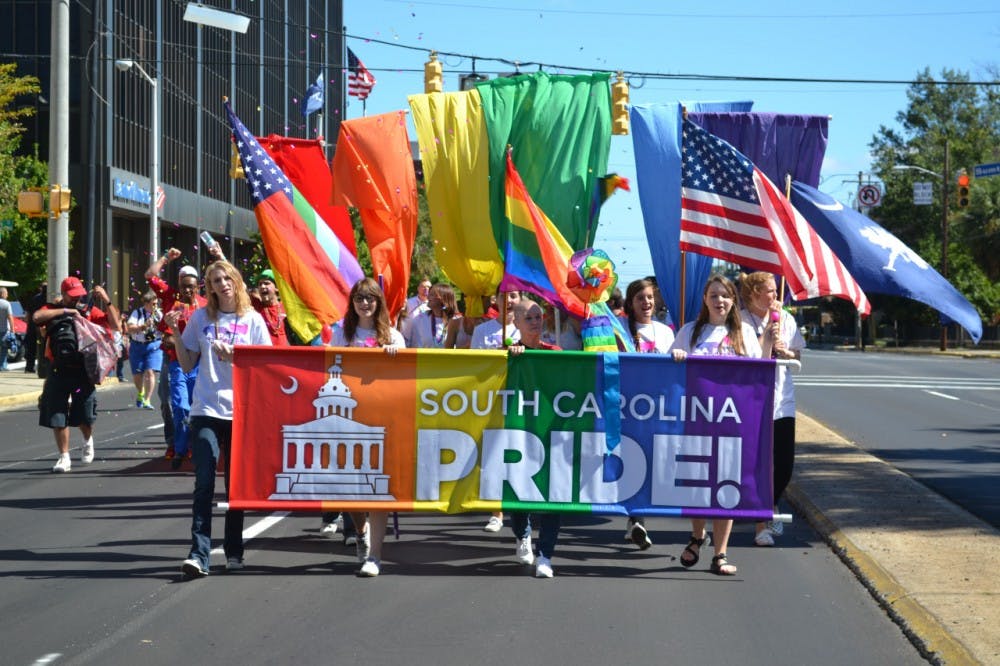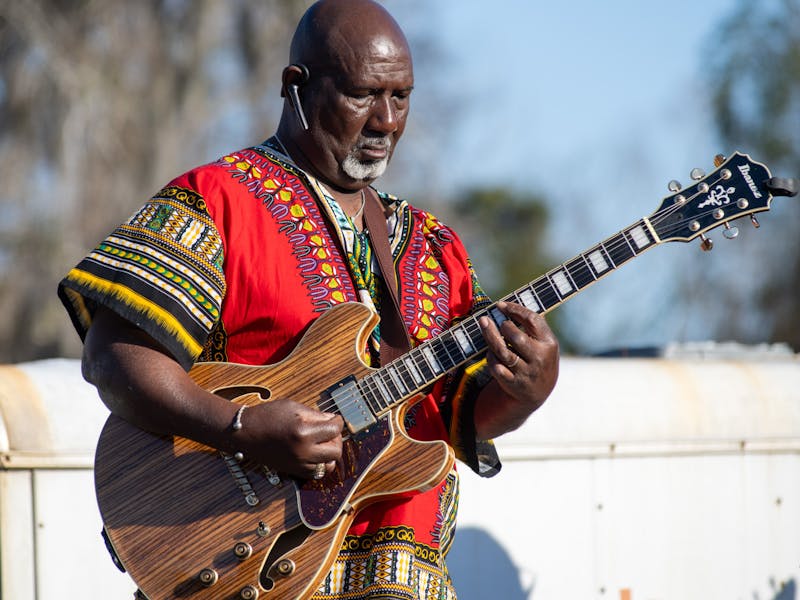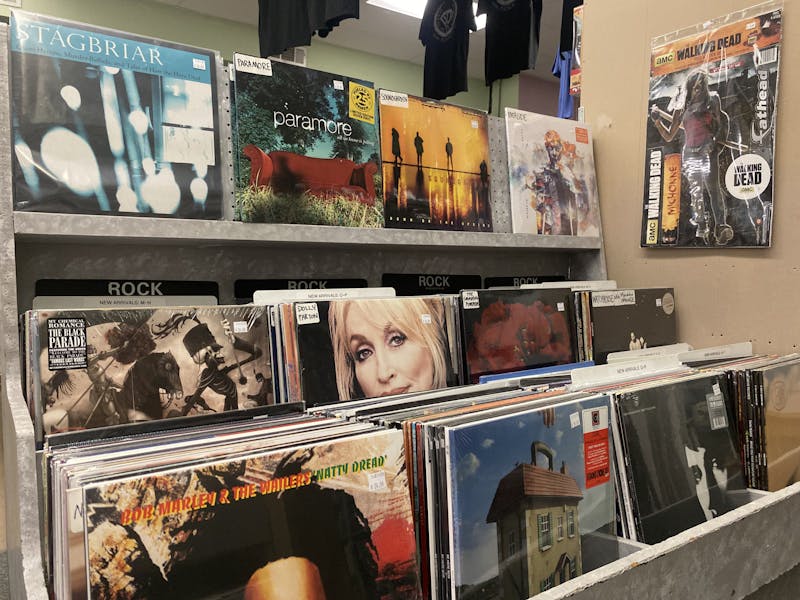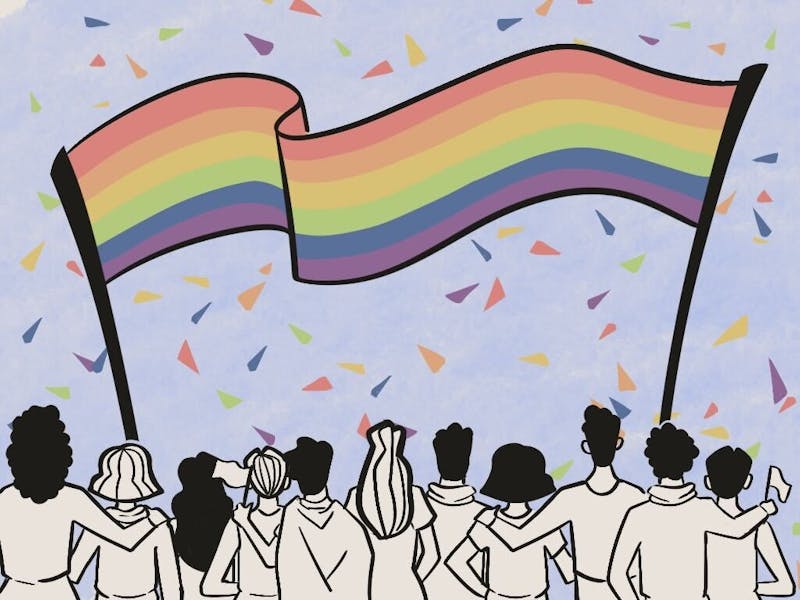Columbia is a curious place. We find ourselves situated solidly in the Bible Belt, a region termed for its conservative tendencies. Being primarily a university town, we’re thankfully fed a regular, if not modest diet of new ideas and ways of thinking.
Admit it: without the university, Columbia would stagnate, with its multitude of corporate offices and abundant pairs of slacks and blue collars. An outsider might look at it and see it as the least likely candidate for a gay pride festival that has stood proudly for 26 years.
Pride had humble beginnings. It began in 1989, with the first attendees gathered on the grounds and steps of the State House. In the following years it changed its location multiple times. In the early 2000s, the festival found its foster home in Finlay Park with a crowd of only a six thousand. Current Pride President Jeff March remembers these modest moments when he first got involved with S.C. Pride seven years ago.“That was really good but it was a destination event," March said. "In other words, you didn’t catch people walking by or anything like that.”
March’s first year as president was 2012, which was also the first year that the festival moved to Main Street.
March said it’s been a relatively hurdle-free come up — at least for the years he’s been at the helm. “When we moved to Main Street, it was a very smooth transition and it became so visible. People finally really knew what Pride was then."
Before breaking through the noise and making the move to Main Street, growth was slow. They pulled a solid crowd year after year but didn’t see nearly the exponential growth that the visibility of Main Street afforded them. “We had the capitol in the background and we took up six streets on Main Street — we went from 6,000 to 17,000 people.”
That type of explosive growth caught the attention of many in Columbia, and attention is what the LGBTQ community needs so desperately. The move to Main Street put Pride in the eyes of so many who hadn’t seen or heard about it before.
After receiving a grant that put them in six blocks of prime location, March received masses of congratulations. “You should be proud of yourself for bringing Pride out of the closet,” a city official said. March thought that was the best way to put it.
Their new home has finally let both the staff and the festival build an identity.
“We put the flags on the lamp posts out there and we’re very loud and recognizable,” March said. Recognizable is right. Pictures from Pride paint it idyllically, with the State House in the distance and the tree-lined borders of the street.
It’s not all about the parade and the events of that day — it’s about continuing pride even when the last of the confetti and glitter is swept up.
“We have lots of allies and what I think our mission is, and in all Prides, is to gain allies,” March said. Allies have and always will play a crucial role in the visibility and representation of the gay community.
“I think more people now are out, so if it’s true what they say, 10 to 15 percent of the population is gay. We need more than that to get votes to swing our way,” March said.
Marriage equality wouldn’t have happened without the immeasurable help of lawyers and litigators across the country, regardless of the reason they fought for the LGBTQ population.
As for the current standing of Pride in South Carolina, it’s unity and presence is undeniable, but the bar can always be raised.
“I do want to surpass the 20,000 of last year. That’s always our goals, to get a bigger crowd every year,” March said. “We should have an even bigger audience because we’re going to be celebrating marriage equality this year. I’d like to see acceptance reach out to as many people as possible. The festival isn’t just for the LGBT[Q] community anymore, it’s for the general population too.”
With the subject of marriage equality on the table, March was eager to discuss to the future of Pride, not just as a regional or national event, but as a worldwide way of thinking.
“Well, we still celebrate Martin Luther King [Jr.] Day, so Pride’s not going to go away. Our battles are not over,” March said.
The next light on the horizon is the issue of workplace discrimination in South Carolina. He points out that one can still be fired for being gay in South Carolina and how bullying remains the ever-stubborn elephant in the room.
“We have a lot more to work on. So we’re far from being equal yet, but we are getting better," March said. "Marriage equality was a step, but not everybody gets married.”
March makes a good point. Marriage equality in the U.S. was a victory; a home run, a grand slam, a full-on landslide victory. But it was just that: a victory, not the victory. The headlines and emotional pictures brought the marches and advances of the LGBTQ community into the living rooms of those who may have turned a blind eye to it.
So what’s the next monumental hurdle on horizon?
“I think the trans community — we’ve got a lot of educating to do ourselves, as well as with the general population,” March said.
Trans issues have risen to the forefront of LGBTQ topics, especially in the past year as increased media coverage has brought trans frontrunners Laverne Cox and newly crowned social media queen Caitlyn Jenner, into the eyes of millions, along with the concerns of their communities.
In recent years as queer culture enters the mainstream, media has shined a spotlight on the LGBTQ community. There’s a minefield of concerns as to how they will continue to be represented.
Programs such as Modern Family, Glee, Looking, Orange Is The New Black and Queer as Folk did their fair share of highlighting and presenting the ins and outs of queer culture. But with any spotlight comes a shadow, and the media has faced harsh criticism in recent years over the stereotypes they subtly enforce.
“We’ve always been the extravagant version of gay on TV," March said. "I don’t know if it’s ever going to be anything different."
If recent events have shown us anything, it’s that there is no form for our community anymore. Our foothold is stronger than ever. Prides all over the world have contributed to cracking the mold and bringing the LGBTQ community out of the shadows.
Like the first footsteps on the moon, the steps we take in our community will be remembered for decades, if not centuries, but we have many more footsteps that must follow.



